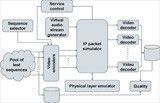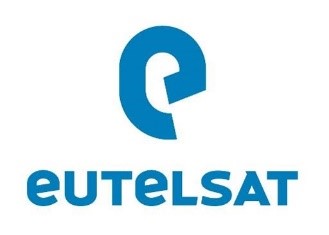
-
StatusCompleted
-
Status date2011-02-10
The objectives of the study on "Scalable Video Coding Applications and Technologies for mobile satellite based hybrid networks" (SVConS) were as follows:
- Investigation of the viability of integrating Scalable Video Coding (SVC) technologies over DVB-SH networks, including:
- Insight on the benefits of scalable video coding in a Mobile TV context,
- Analysis of the DVB-SH specifications with respect to support of scalability,
- Provision of methods for estimating the gain of SVC compared to reference H.264/AVC,
- Verification of these methods via simulation of selected DVB-SH use cases,
- Benchmarking of DVB-SH against other bearer technologies for Mobile TV that are capable of supporting scalable video coding schemes.
- Dissemination of the results to the relevant fora (scientific community, DVB TM–SSP).
The main constraints on tools and methodologies to be applied for this study concerned two different areas:
- Video coding related part:
- State-of-the-art encoding/decoding tools for H.264/AVC and SVC should always be used with as few proprietary modifications as possible.
- Performance evaluation should be based on commonly accepted objective measures only, i.e., no subjective tests were possible within the project’s scope.
- Transmission related part:
- DVB-SH link and PHY layer processing and channel characteristics should be modeled as realistic possible.
- Fair comparison to other technologies via similar choice of global system parameters, like bandwidth, modulation and coding options, control overhead, etc should be achieved.
During this study, the following four important reference use cases for SVC over DVB-SH were investigated:
- Is support of heterogeneous terminals on the satellite link feasible?
- Can we efficiently exploit heterogeneous reception conditions on the satellite link?
- Is it possible to extend the terrestrial coverage region without affecting service quality?
- Can we efficiently exploit hybrid reception conditions?
For more details, including a description of the primary objective, the list of simulation parameters, and the main results, the reader is referred to the Executive Summary and/or the Final Report.
Within the SVConS project, a total of 11 use cases for SVC in DVB-SH and ETSI-SDR like systems were investigated. The main findings are as follows:
- Satellite reception:
- Due to the TDM-OFDM gap, UEP via HMOD is not very efficient and makes it hard or even impossible to gain in services.
- Hence, support of heterogeneous terminals only seems to be economically feasible with either the 2 carrier solution or multi-pipe.
- For other use cases, no significant gain of SVC+UEP could be verified so far.
- Terrestrial reception:
- Significant gains in both coverage and services could be clearly demonstrated with a scalable configuration.
- In contrast to the satellite, HMOD outperformed multi-pipe due to the more robust HP part.
- General:
- The ESR5 criterion seems to be relatively sensitive to small changes in the received signal strength, population of the multiplex, and duration of time slicing interval.
- It also does not reflect the effects on video quality properly (→ MPE frame error rate).
- The definition of reference use cases and operation points is somewhat arbitrary (i.e., there exist no real guidelines), but has a strong impact on the results.
Future work in this area may deal with the following issues:
- To further enhance the significance of the results, the simulation campaign should be extended to alternative operation points, longer channel patterns, and more diversity in the video material.
- Objective performance criteria, especially ESR5(20) and PSNR5% need validation through a test bench set-up with the following components:
- Real-time video encoder and decoder.
- Current variant of the DVB-SH simulator, patched with real-time packet processing.
- On-line visual quality assessment for subjective test campaigns.
- Future work on SVC for satellite systems should be enlarged to cover fixed and mobile applications other than Mobile TV in S-band, such as broadcast TV to vehicular platforms in Ku or Ka-bands.
- If the DVB-NGH group decides to move forward with a specification for satellite support, the SVConS results should be supplied and expanded to benefit from the many "lessons learned" so far.
A high-level overview of the simulation platform used in this study is shown in the figure below. It consists of four major parts:
- the multimedia encoding/decoding modules,
- the IP packet simulator,
- the physical layer emulation,
- the application-level quality evaluation module.
The main interactions between the different parts during a simulation run are as follows: For each offered multimedia service, the video content to be encoded in each time slicing round is chosen from a pool of test sequences. This selection process is done in a reproducible and statistically relevant manner, and the generated video sequences are stored as reference for the later quality evaluation.
The bench of Video Encoders then generates the corresponding RTP/UDP/IP stream for each service using the video coding format (e.g., AVC or SVC) specified at simulation startup. In addition, a (dummy) audio component is also inserted in each output stream. The overall generation process is controlled such that the resulting streams fulfil certain predefined bit rate and delay constraints, but also exhibit good quality across all services. The Service Control may also receive dynamic feedback from the IP packet simulator to update the bit rate target in each time slicing round, if required.
The generated test streams are fed to the IP packet simulator, whose task is to generate the delay and loss characteristics for each service based on the specific DVB-SH system configuration chosen at simulation startup. For this reason, the IP packet simulator contains a fully-featured model of the DVB-SH link layer processing done at the broadcast transmitter and the terminal receiver.
Emulation of the DVB-SH physical layer processing of the MPEG-2 transport stream(s) and the actual transmission process over the satellite and/or terrestrial link is handled by a separate module that communicates with the IP packet simulator in each time-slicing round. Besides realistic error flags at MPEG-2 TS level, this module supplies the necessary advances in transmitter and receiver timing due to the physical layer processing and propagation delay.
Finally, the bench of Video Decoders processes the received media streams at the output of the IP packet simulator and stores them for subsequent quality evaluation. The latter is then performed taking into account the original and the decoded sequences.
Work in the SVConS project was organized in five different phases:
- In-depth definition and thorough pre-assessment of potential application scenarios and use cases for SVC in Mobile TV services.
- System simulation and analysis of the most promising and relevant use cases compared to reference system deployment.
- Critical review of tools, methodology, and parameter settings based on the outcome of the initial investigations.
- Repetition of certain use cases with modified assumptions to improve the significance of the results.
- Dissemination of results and formulation of recommendations for practical system deployment.
The SVConS project was successfully completed at the end of 2010.




